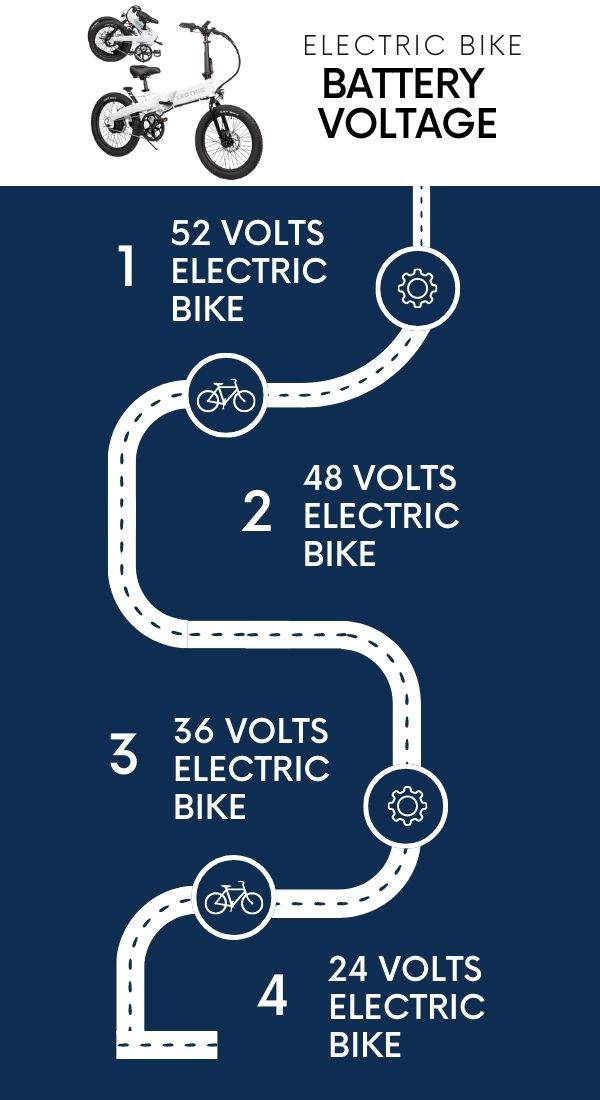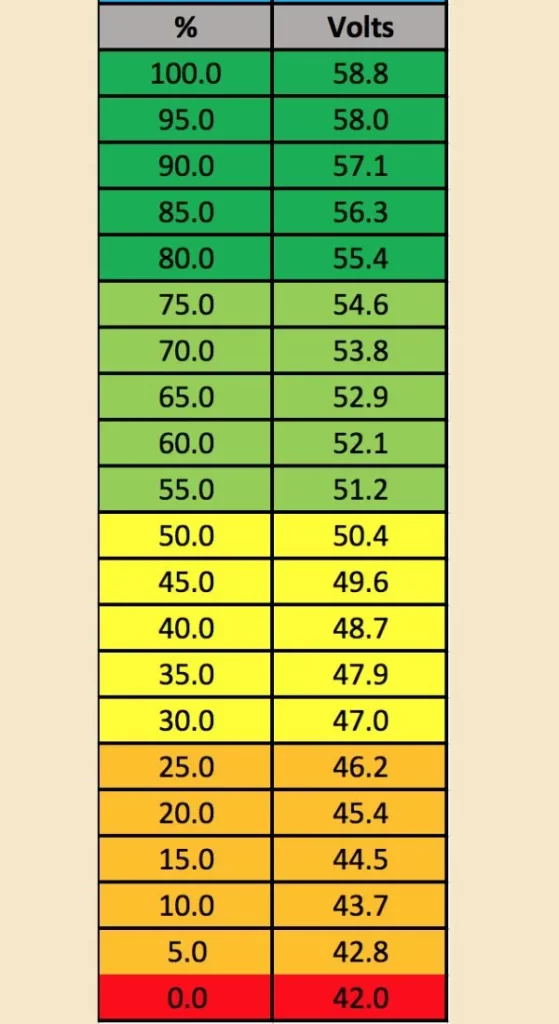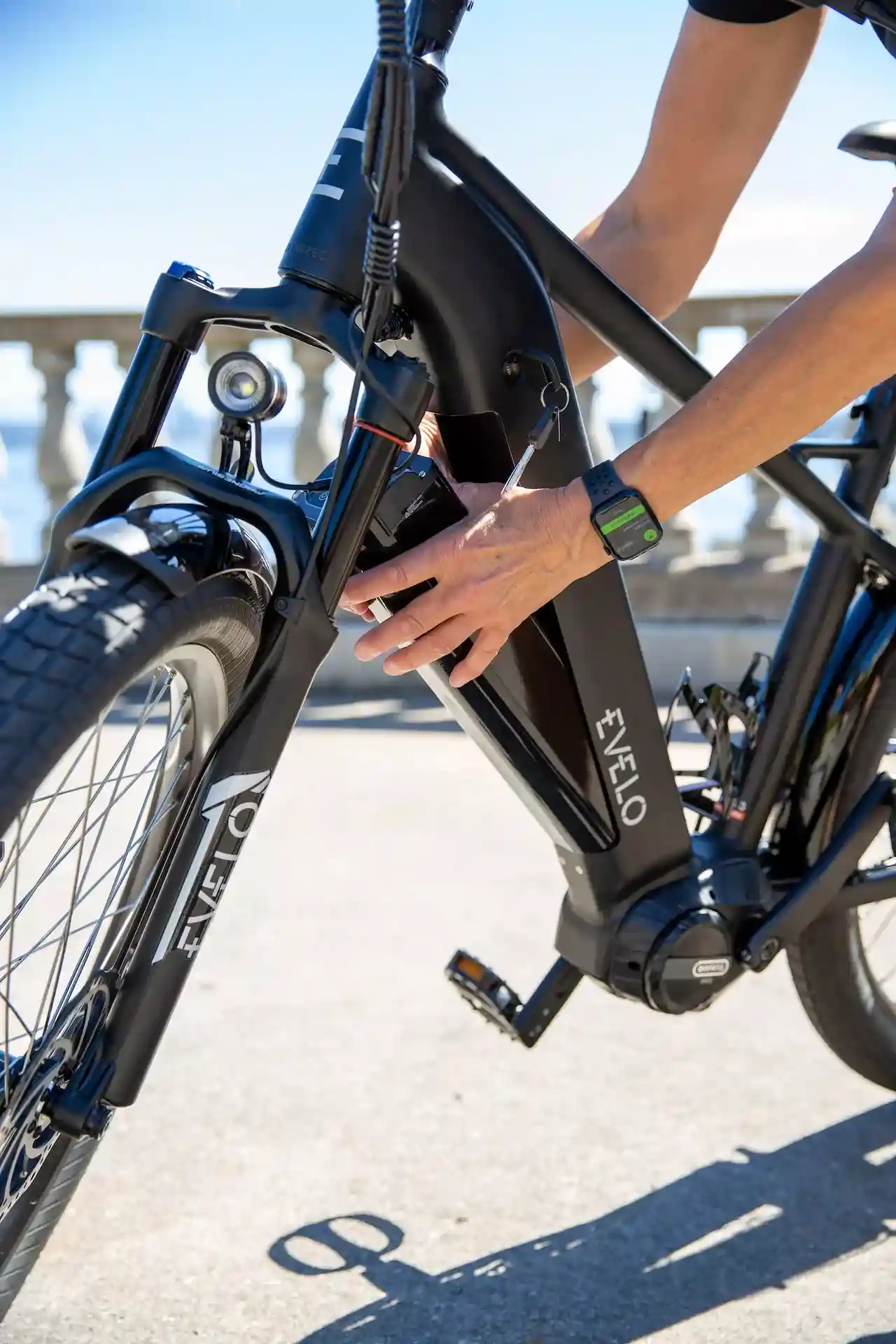Electric Bike Voltage Explained| Do ebike volt matter? (52v,48v,36volt)
Electric bikes, often referred to as e-bikes, are becoming increasingly popular due to their efficiency, environmental benefits, and ability to make cycling more accessible to a wider audience. One of the most crucial aspects of e-bike performance is the battery voltage. Understanding e-bike voltage is essential for optimizing performance, ensuring safety, and making informed purchasing decisions. This article will delve into the definition and importance of e-bike voltage, how it affects performance, common voltage levels, and practical tips for maintaining and utilizing e-bike voltage effectively.
When you are in the right mindset of going to buy an electric bike You will be going to witness a lot of terminologies regarding the electric bike voltage and watts. You will be going to have concerns about rather the 52-volt e-bike is faster than the 48-volt and 36volt ebike.
What is Electric Bike Voltage?
Definition and Importance
Electric bike voltage is the measure of electrical potential difference provided by the e-bike’s battery. It is similar to water pressure in a pipe; higher voltage means more pressure, which translates to more power being delivered to the e-bike’s motor. Voltage is a critical factor because it determines the bike’s speed, acceleration, and overall performance.
Expert Opinion: Michael Geurts, a partner at Blue Monkey Bikes, explains that “volts pretty much mean power — how powerful a battery can be, but it also lends to top speed”. This analogy helps to understand that higher voltage batteries can push more power through the motor, resulting in better performance.
How Voltage Affects Performance
The voltage of an e-bike battery significantly impacts its performance in various ways:
- Speed: Higher voltage allows the motor to spin faster, increasing the top speed of the e-bike.
- Acceleration: More voltage means quicker power delivery, enhancing acceleration.
- Hill Climbing: Higher voltage batteries provide better power for climbing steep hills.
A study by the University of Tennessee found that e-bikes with higher voltage batteries performed better on hill climbs and maintained higher speeds over longer distances compared to those with lower voltage batteries.
Common Voltage Levels: 36V, 48V, 52V
E-bike batteries typically come in three common voltage levels:
- 36V: Suitable for casual riding and flat terrains. They are lighter and more affordable but offer less power and range.
- 48V: The most common voltage, offering a good balance between power, performance, and range. Ideal for most riders.
- 52V: Provides higher performance, better for steep hills and heavier loads. These batteries are more expensive and heavier but offer superior speed and power.
Electric Bike Voltage Charts
Electric Bike Voltage Chart for 48V, 52V, and 36V Batteries
To better understand the performance differences, let’s look at a voltage chart for these three common battery types.
| Voltage Level | Average Speed (mph) | Typical Range (miles) | Usage Scenario |
|---|---|---|---|
| 36V | 15-20 | 20-30 | Flat terrain, casual rides |
| 48V | 20-28 | 30-45 | Mixed terrain, moderate hills |
| 52V | 28-35 | 35-50 | Steep hills, heavy loads |
What is an Electric Bike Voltage(Voltage chart)?
Voltage is basically the pressure of electric current or the speed of electric current. The higher the amount of current is the higher the voltage will get. The voltage of an e-bike typically refers to the voltage of its battery system.
Battery voltage in e-bikes
In e-bikes there are various different battery voltages available.
- 52 volts electric bike
- 48 volts electric bike
- 36 volts electric bike
- 24 volts electric bike

I. Why 52 voltage electric bike is recommended
52-volt electric bikes are recommended in most cases as they give better performance in all terrain like streets, offroading, and the best battery range.

II. 48 Voltage Electric Bike (Voltage chart)
48 Volt electric bikes run on 48v electrical systems.

III. 36 Voltage Electric Bike
A 36-volt ebike typically refers to an electric bicycle powered by a 36-volt battery system.
IV. 24 Voltage Electric Bike
A 24-volt Ebike typically refers to an electric bicycle powered by a 24-volt battery system.
Comparing 36V, 48V, and 52V Batteries
- 36V Batteries: These are lighter and more affordable, making them suitable for casual riders and those on flat terrains. However, they offer less power and range.
- 48V Batteries: These provide a good balance of power and range, making them suitable for most riders. They handle mixed terrains and moderate hills efficiently.
- 52V Batteries: These are designed for higher performance, suitable for riders dealing with steep hills and heavy loads. They are more expensive but offer superior speed and power.
What is Electric Bike Volts, Amps, and Watts?
| Electric Bike Battery Voltage | Power | Speed | Range |
|---|---|---|---|
| 52 volt electric bike | 1000 watts | 30-36 mph | 65-70 miles |
| 48 volt electric bike | 250 watts to 750 watts | 28mph | 20 to 28 miles |
| 36 volt electric bike | 250W, 500W, or even higher | 20mph | 20 and 50 miles |
| 24 volt Electric bike | 200 to 250 | 15 to 20mph | 20 to 40 miles |
Highest Electric Bike Voltage Available
While 72V systems are available, they are typically used for high-performance applications and come with increased risks and complexities. Most consumer e-bikes use up to 52V for a balance of performance and safety .
Voltage Displays and Meters
Types of Voltage Displays for Electric Bikes
Voltage displays on e-bikes can vary, but they generally fall into two categories:
1. Analog Voltage Displays
- Description: These displays use a needle to indicate voltage levels, similar to a traditional fuel gauge in cars.
- Advantages:
- Simple to read at a glance.
- Typically durable and less prone to digital failures.
- No need for power to display the current voltage.
- Disadvantages:
- Less precise compared to digital displays.
- Limited additional information (e.g., no detailed battery status or error codes).
2. Digital Voltage Displays
- Description: These displays use an LCD or LED screen to show the voltage in numeric form.
- Advantages:
- High precision and easy-to-read voltage values.
- Can provide additional information like battery percentage, estimated range, and error codes.
- Often backlit, making them easy to read in low-light conditions.
- Disadvantages:
- May be more susceptible to damage from impacts or water.
- Requires power to display information, which can be an issue if the battery is completely drained.
3. Multi-Function Displays
- Description: These are advanced displays that integrate voltage monitoring with other functions, such as speed, distance traveled, and remaining battery life.
- Advantages:
- Comprehensive information in one place, reducing the need for multiple devices.
- Often customizable, allowing users to display the most relevant information.
- Some models offer connectivity with smartphones and apps for detailed tracking and analysis.
- Disadvantages:
- More complex and potentially more expensive.
- Higher power consumption.
- Potential for information overload for users who prefer simplicity.
4. Graphical Displays
- Description: These displays use graphical interfaces to represent voltage and other data visually.
- Advantages:
- Intuitive and easy to understand at a glance.
- Can show trends and historical data for voltage and battery performance.
- Often touch-sensitive, offering interactive features and customization.
- Disadvantages:
- Expensive compared to simpler displays.
- Higher power usage and more prone to malfunction.
- Requires more user interaction and understanding.
Comparison
| Feature | Analog Display | Digital Display | Multi-Function Display | Graphical Display |
|---|---|---|---|---|
| Precision | Low | High | High | High |
| Information Depth | Low | Medium | High | High |
| Durability | High | Medium | Medium | Medium |
| Power Requirement | None | Low | High | High |
| Cost | Low | Medium | High | High |
| Ease of Use | High | High | Medium | Medium |
| Additional Features | None | Some (e.g., error codes) | Many (e.g., speed, range) | Many (e.g., trends, interactive) |
How to Read and Interpret Voltage Meters for Electric Bikes
Reading and interpreting voltage meters for electric bikes is essential for monitoring battery health and performance. Here are steps and tips for reading both analog and digital voltage meters.
Analog Voltage Meters
Analog meters have a round dial with a needle that moves to indicate the voltage level. Here’s how to read them:
- Identify the Type: Confirm that you have an analog meter, which typically has a single dial and a moving needle.
- Read the Needle Position: Look at where the needle is pointing. The numbers on the dial represent the voltage.
- Between Numbers: If the needle is between two numbers, note the lower number. Some dials also have smaller lines between the numbers for more precise readings.
- Check Regularly: Analog meters are generally accurate within 2-3%, but should be periodically checked and calibrated for precision.

Digital Voltage Meters
Digital voltage meters use an LCD or LED screen to display voltage numerically. They are straightforward to read and interpret:
- Turn On the Meter: Ensure the digital meter is powered on and set to measure volts.
- Read the Display: The screen will show the exact voltage in numeric form.
- Voltage Sag: Be aware of voltage sag, which is a temporary drop in voltage under heavy load (e.g., high throttle, uphill riding). It’s normal for the voltage to drop and then recover once the load decreases.
- Calibration: Some digital displays can be calibrated to show battery levels in percentages or voltage bars, providing a more intuitive understanding of battery health.

Using a Multimeter [How do I check the voltage on my electric bike?]
A multimeter can measure voltage, current, and resistance and is a versatile tool for checking e-bike batteries:
- Set to Volts: Ensure the multimeter is set to the correct setting to measure voltage.
- Connect the Probes: Attach the red probe to the positive terminal and the black probe to the negative terminal of the battery.
- Read the Voltage: The multimeter will display the voltage. For a 36V battery, a fully charged state should show around 42V, and for a 48V battery, it should show around 54V. A significant drop below these values indicates the battery may need recharging or replacement.
Important Considerations
- Battery Health: Regularly monitor the voltage to ensure your battery remains within healthy operating ranges. Extreme voltage drops can indicate a need for maintenance or replacement.
- Environmental Factors: Keep batteries at optimal temperatures to avoid damage. Store them in a cool, dry place, and avoid exposing them to extreme temperatures.
- Safety: Always handle batteries and meters with care, following manufacturer guidelines to prevent accidents.
- Turn on the display: Ensure the bike is powered on.
- Check the voltage level: Read the value displayed, usually in volts (V).
- Interpret the reading: Compare it against the known full charge and empty levels to determine battery status.
Benefits of Voltage Displays
Having a voltage display on your e-bike is beneficial for several reasons:
- Real-time monitoring: Allows you to keep track of your battery’s status during rides.
- Planning: Helps you plan your trips better by knowing how much charge is left.
- Maintenance: Assists in maintaining the battery’s health by avoiding over-discharge.
Voltage in Practical Use
Fully Charged E-Bike Voltage
The voltage of a fully charged e-bike battery typically reads slightly higher than its nominal voltage. For example, a fully charged 48V battery may read around 54.6V. This higher voltage ensures that the battery is at its peak performance when fully charged.
Importance of Maintaining Proper Voltage Levels
Maintaining proper voltage levels is crucial for several reasons:
- Battery Health: Regular charging and avoiding complete discharge can prolong battery life.
- Performance: Keeping the battery charged ensures consistent performance.
- Safety: Proper voltage levels prevent potential electrical issues and hazards.
What is Voltage-Related Safety Tips | list down important 15
Ensuring safety when dealing with electric bike voltage and battery systems is crucial. Here is a list of important voltage-related safety tips:
- Use the Correct Charger:
- Always use the charger provided by the manufacturer or a compatible one recommended for your specific e-bike model.
- Inspect Cables and Connectors:
- Regularly check all cables and connectors for wear and tear, fraying, or damage. Replace any damaged parts immediately.
- Avoid Overcharging:
- Do not leave your e-bike battery charging unattended for long periods, especially overnight. Overcharging can lead to overheating and battery damage.
- Store Batteries Properly:
- Store batteries in a cool, dry place away from direct sunlight and extreme temperatures. High temperatures can degrade battery performance and safety.
- Do Not Expose to Water:
- Keep the battery and electrical components dry. Avoid riding in heavy rain or submerging your e-bike in water.
- Handle Batteries with Care:
- Avoid dropping or puncturing the battery. Physical damage can lead to dangerous chemical leaks or fires.
- Regular Maintenance:
- Follow the manufacturer’s maintenance schedule and guidelines to ensure all electrical components are in good working condition.
- Monitor Battery Temperature:
- During charging and use, monitor the battery temperature. If it becomes excessively hot, stop using the bike and consult a professional.
- Disconnect When Not in Use:
- Disconnect the battery from the bike if it is not going to be used for an extended period to prevent accidental discharge or damage.
- Use Protective Gear:
- Wear gloves and eye protection when handling batteries to protect against any accidental spills or short circuits.
- Follow Manufacturer’s Guidelines:
- Adhere to all safety instructions and operational guidelines provided by the e-bike and battery manufacturer.
- Avoid Unauthorized Modifications:
- Do not attempt to modify the battery or electrical system. Unauthorized modifications can lead to safety hazards.
- Keep Away from Flammable Materials:
- Charge and store the battery away from flammable materials to reduce the risk of fire.
- Educate Yourself:
- Familiarize yourself with the specific safety features and requirements of your e-bike model.
- Seek Professional Help:
- If you experience any issues or notice unusual behavior in the battery or electrical system, consult a professional technician.
By following these safety tips, you can ensure a safer and more reliable experience with your electric bike.
E-Bike Batteries
The batteries in e-bikes are made up of several battery cells that have affixed amounts of volts. It varies for different types of batteries. In case of lithium-ion batteries, each cell has 3.6 volts per average.
The 100 percent charged lithium battery has 4.2 volts per cell if it decreases to 3.6 by drowning to 80%. While it is at a dead end it will have around 3.4 volts per cell.
If cells are drowned to 3 volts battery will never be able to charge again. It is considered dead at that point.
There is a downfall named the voltage sags. If the battery cells face very high currents their voltage sags. So higher power efficient cell batteries are recommended for high performance.
If a person with a heavyweight rides the E-bike battery will drown faster than a person with a low weight.
Read More: How Long Do Electric Bike Batteries Last?
Ebike-weight: How much does an Electric Bike Weight?
Electric Motor Basics
Here we will put light on how the motor has relationships with the amps, volts, and watts.
Motor k-value
In ebike terminology, all the ebikes have the motor velocity constant or motor k-value.
This k-value refers to the rpms. In the case of bikes, 100rpm*volts gives us the top rpms the ebikes will be going to attain. The Ebike cannot exceed the pre-set rpms unless you increase the volts.
For Example; The ebike with 15 volts battery will have 1500 rpms it cannot exceed this pre-set rpm. Whereas 20 volts can produce 2000rpms at its peak performance.
Read More: What’s The Difference Between Hybrid And Electric Bikes?
Motor controllers – how do they work?
Some questions are raised about the throttle of e-bikes. These questions are:
How electric bikes get slow and fast when they have a fixed amount of kv values.
The electric bikes have fixed kv values which is true it determines the top rpm or speed that an electric bike can achieve. The throttle response has a direct link with kv values.
How kv values do not affect the speed of the bike.
These kv values remain the same throughout the whole mechanism; the component that maintains the speed of an electric bike is the motor controller.
What is the kv value of Motors; What are its effects on the speed?
The motor controllers are nothing just an On/Off switch. This switch works as when the throttle is 25% the motor is on 25% and off 75%. It turns the on and off the motor according to the throttle response it gets. The 100% throttle results in a 100% switch that then gives the top speed.
Conclusion
Understanding electric bike voltage is essential for maximizing performance and safety. By choosing the appropriate voltage level and maintaining your battery correctly, you can ensure a smooth and efficient riding experience. Whether you’re a casual rider or an e-bike enthusiast, knowing the basics of voltage can help you make informed decisions and get the most out of your e-bike.
More power is necessary to help you climb the uphills and to do off-roading but they can be resultant of a fast battery drowning in e-bike. You can compromise the power with the battery life spans. Or save battery and have less power in your hands.







